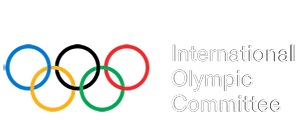Individual competitions include:
5 points
The 5 Points course is most similar to orienteering running. Competitors must find five points underwater in a set order. The points are placed in the competition area with an increasing distance between them (usually 80, 100, 120, 150 and 200 meters). According to the rules, the competitor has a certain limit for finding each control point, in case they do not find the point within this limit, the race ends and they are pulled out of the water by the referee.
In this discipline, the time in which the competitor swims the entire race course and reaches the fifthy, finish point, is evaluated.
Star course
"Star" is the most demanding individual discipline, it is a combination of M-course and „5 Points“.
The shape of the track forms a five-pointed star when viewed from above on the water surface. The inner points of the star are swum around, while the outer points of the star must be found by the competitor. The difficulty of the discipline is determined by the fact that the competitor often changes the course he swims. In total, the course is changed ten times. At the finish line, the time in which the competitor completes the entire route is evaluated.
M course
"M course" is the name for a discipline that looks like the letter "M" when viewed from above on the water surface. In this race, the competitors do not look for any checkpoints, but their task is to swim around the individual points from the correct direction and reach the finish line. That is made up of a thirty-meter zone, whose center the competitors must hit. Each meter by which the competitor diverts from the center of the zone at the finish line means penalty points in the overall ranking. In this discipline, the competitor's time at the finish line, when his buoy crossed the finish zone, and the deviation from the center of the zone, are evaluated.
Parallel course
"Parallel course" is the youngest discipline of underwater orienteering and, at the same time, the shortest discipline. The track is about 220 meters. After the start, the competitor swims around the checkpoint, and then he must find the point and swim to the finish line, which is made up of a 3-meter-wide gate. The competitor must hit this goal, if they miss the goal, they are not evaluated at the finish line.
This discipline is very attractive because 2 identical courses are built in the racing area, mirrored, and the competitors swim in a one-on-one elimination system.
Team competitions consist of:
MONK (Team Orientation by Map)
The "MONK" pair race is a map race and its course is completely different from other races. From 6 to 8 poles are completely sunken in the racing area. Competitors do not know in advance where the race route leads. The order of the five points that make up the race course is drawn before the race. The last point, which is the finish pole, is placed as usual, partially above the water surface.
The two competitors are connected by a two and a half meter long tie. One of the pair directs the azimuth and the distance between individual control points using a special device and a map. He then guides himself and the other competitor according to the compass. The task of the second competitor is to help to find controls and mark the reaching of the control. At the finish line, the time achieved by the pair is evaluated.
An individual variant of this discipline is the EONK, in which the competitor selects the track from the map and also marks the reached points on the control card.
Team event
"Team competition" is a discipline for 4 competitors. Each of the competitors has their own starting point, from which the competitors start at the same time. On the race course individual competitors gradually gather and together find control points. At first they form pairs and finally all 4 swim to the finish, which is made up of a finish line, the same as in the M-course discipline. The deviation from the center to either side means getting penalty points and therefore a time penalty in the final evaluation.
REGULATIONS
|
Rules_eng_2025
|
1012.4 KB | |
|
Rules Edition 2019 01
|
1.72 MB | |
|
ANNEXE 9_DECLARATION
|
628.76 KB | |
|
Annexe 8_Rules for CAT B Competitions in Underwater Orienteering
|
288.03 KB | |
|
Annexe 7_Rules for CAT A competition in Underwater Orienteering (juniors)
|
436.53 KB | |
|
Annexe 6_ Rules for Cat A competitions in Underwater Orienteering
|
277.62 KB | |
|
Annexe 5_Team Competitions
|
756.93 KB | |
|
Annexe 4_Specific rules Parallel race
|
542 KB | |
|
Annexe 3_Specific rules Star
|
486.05 KB | |
|
Annexe 2_Specific rules 5 Point - Course
|
302.45 KB | |
|
Annexe 1_ Specific rules M - Course
|
310.34 KB |









